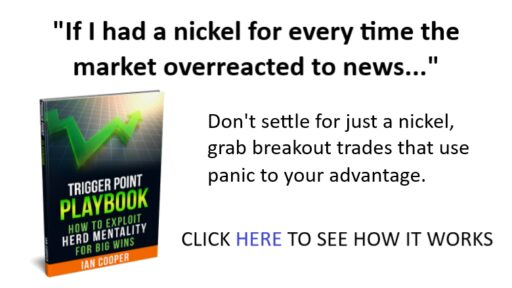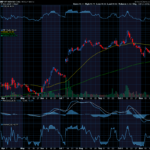by Andy Chambers
If you happen to own at least 100 shares of stock, the Exchange will allow you to sell one Call Option for every 100 shares of stock that you own. The advantage of selling a Call option is to increase your earning potential if the market trades sideways or declines. But, if the market goes up, your gains in the stock will be partially offset by your losses from selling the option. Notice that we said ‘partially offset’. You will still make money, but your profit will not be as much as it would have.
Let’s assume our outlook is bullish. We could of course, purchase a Call option or we could take a chance and sell a naked Put option. There is a certain amount of risk in purchasing the Call option, but the risk in selling a naked Put option is much greater. The other possibility is to initiate a Covered Call. The only disadvantage to initiating Covered Calls is that it requires much more money. When purchasing Call options, you’ll find hundreds of reasonably priced options, which allows you to trade in a small account. On the other hand, when selling a Put option, you actually receive money for the sale of the option. But, it doesn’t end there. The Exchange will not allow you to sell naked options unless you have a very large account capable of covering any losses that could occur.

Covered Calls can be initiated for as little as $2,500, sometimes less depending on the price of the stock. If a stock is trading at $12 a share, the first step is to purchase 100 shares of the stock. Once you own the stock, the Exchange will allow you to sell one Call option. If the Call option sells for $100, the net cost of your trade is $1,100 ($1,200 less $100). If the stock trades sideways or higher, it’s possible that your trade will result in a profit of $100. In fact, if the price of the stock declines by a small amount, let’s say down to $11.50, you could still make a profit of around $50. If the stock declines to $11 you could break even, but if the stock declines below $11, your trade would result in a loss. Let’s take a look at the arithmetic:
| Purchase 100 Shares @ $12 | $1,200 |
| Sell 1 Call Option @ $100 | – 100 |
| Net Cost of the Trade | $1,100 |
Let’s assume for this example, that the Call option has a strike price of $12. Since the strike price of the option is exactly the same price as our stock, the option is considered to be at-the-money. Let’s also assume that the option expires in exactly three months. If our outlook is correct and if the price of the stock is at or above $12 on the day that the option expires, our profit on the trade would be $100. A profit of only $100 may not seem like much, but it’s actually a return of just over 9% in three months. If you could make 9% every three months on the same $1,100 your return for the year would be 36%.
Here’s the arithmetic. Let’s assume that the stock is trading at exactly $12 on the day the option expires. If we bought the stock at $12 a share, then we obviously would have no profit in the stock. But what about the option? Remember, we sold the Call option to someone that thought the stock was headed higher, but those gains never materialized. Because the strike price of the Call option was $12 and because the stock was $12 at expiration, the Call buyer would not be entitled to any money and we’d be allowed to keep the entire $100.
However, let’s assume the stock was priced at $12.75 on the day the option expired. Our stock would have made a profit of $75, but because the stock finished higher than the strike price of the option, the Call buyer would be entitled to the difference. In this case, the option would be worth the same $75. Therefore, from the $100 we collected when we sold the option, we’d have to pay the Call buyer $75. But, our profit from the trade would still be $100 ($75 from the stock and $25 from the option). It doesn’t matter how high the price of the stock goes, the maximum profit we could make from this Covered Call is $100.
Always remember, in order to calculate the profit (or loss) on a Covered Call, you must consider both pieces of the trade separately. You first calculate the gain or loss on the stock and then you calculate the gain or loss on the option. The combination of the two is the overall profit or loss on the trade.
Let’s make one change to this example. Let’s say that we bought the stock at $11.90 a share and stock is priced at $12 a share the day the option expires and let’s assume that we sell the stock.
| Cost Price | Selling Price | Gain or Loss | |
| 100 Shares of Stock | $1,190 | $1,200 | $10 |
As you can see, we made a profit of $10 on the stock. But because the stock was exactly $12 on the day the option expired, the option has no value.
| Selling Price | Value at Expiration | Gain or Loss | |
| 1 Call Option | $100 | $0 | $100 |
If we add the $10 we made on the stock to the $100 we made on the option, the overall gain would be $110.











Recent Comments